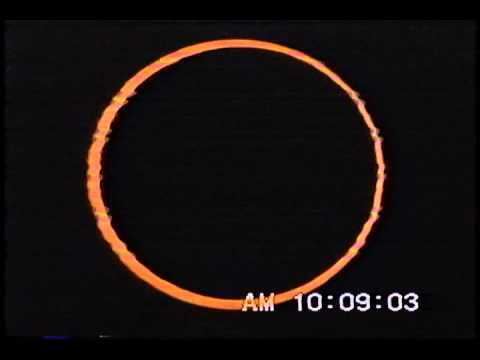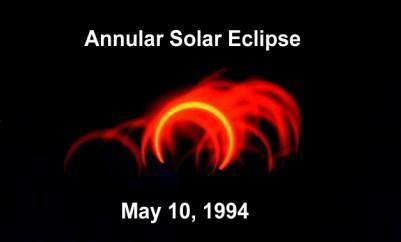Nature Annular Magnitude 0.9431 Max. width of band 230 km (140 mi) Start date May 10, 1994 | Gamma 0.4077 Duration 373 sec (6 m 13 s) Greatest eclipse 17:12:27 | |
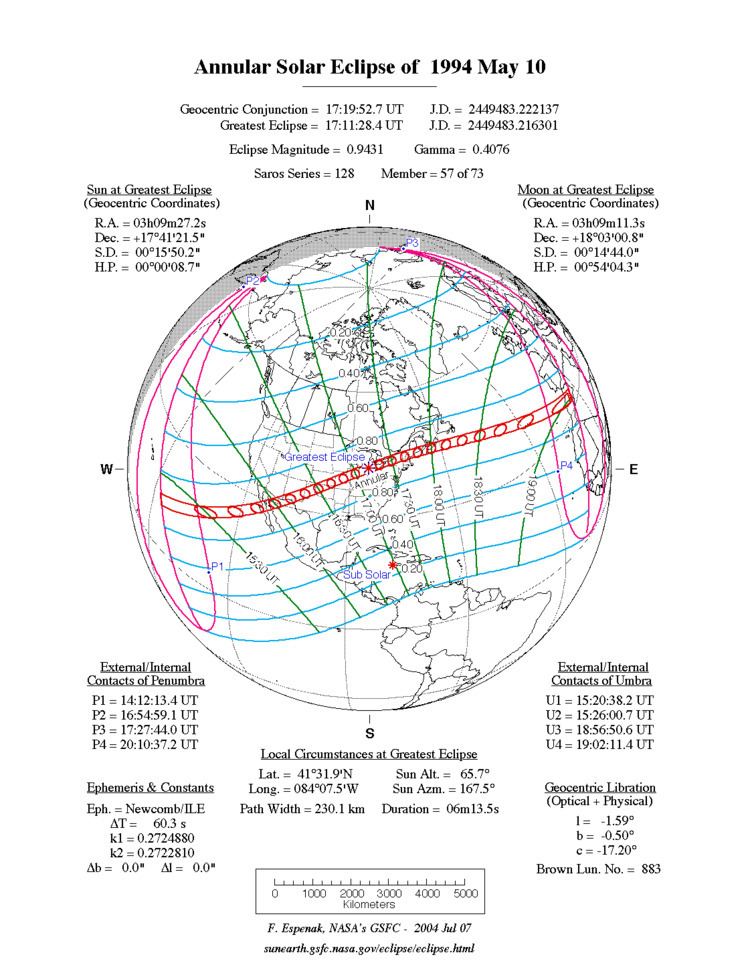 | ||
An annular solar eclipse occurred on May 10, 1994. A solar eclipse occurs when the Moon passes between Earth and the Sun, thereby totally or partly obscuring the image of the Sun for a viewer on Earth. An annular solar eclipse occurs when the Moon's apparent diameter is smaller than the Sun's, blocking most of the Sun's light and causing the Sun to look like an annulus (ring). An annular eclipse appears as a partial eclipse over a region of the Earth thousands of kilometres wide. The path of annularity crossed Baja California, Mexico, the United States and the Canadian provinces of Ontario and Nova Scotia.
Contents
Solar eclipses 1993-1996
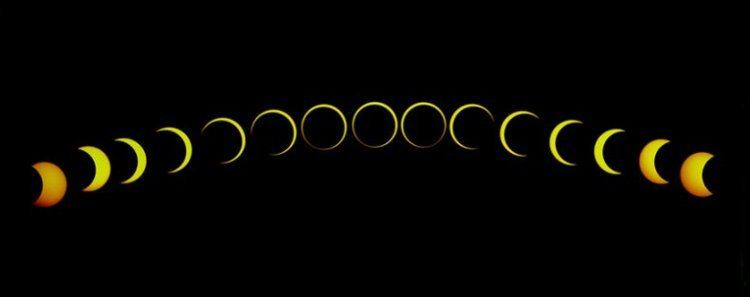
Each member in a semester series of solar eclipses repeats approximately every 177 days and 4 hours (a semester) at alternating nodes of the Moon's orbit.
Saros 128

It is a part of Saros cycle 128, repeating every 18 years, 11 days, containing 73 events. The series started with partial solar eclipse on August 29, 984 AD. It contains total eclipses from May 16, 1417 through June 18, 1471 and hybrid eclipses from June 28, 1489 through July 31, 1543. Then it progresses into annular eclipses from August 11, 1561 through July 25, 2120. The series ends at member 73 as a partial eclipse on November 1, 2282. The longest duration of totality was 1 minutes, 45 seconds on June 7, 1453.
Metonic cycle
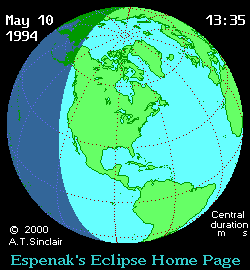
The metonic series repeats eclipses every 19 years (6939.69 days), lasting about 5 cycles. Eclipses occur in nearly the same calendar date. In addition the octon subseries repeats 1/5 of that or every 3.8 years (1387.94 days).
